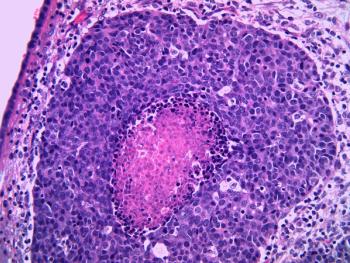
Novel Approach Can Immobilize Cancer Cells
Attacking overgrown lamellipodia and filopodia could prevent cancer metastasis.
Cancer cells are known to evade numerous types of drugs that target many different crucial pathways. Once cancer metastasizes, treatment options are significantly limited.
A new study published by the Proceedings of the National Academy of the Sciences found that inhibiting the movement mechanisms of cancer cells prevents
The authors discovered that miniature gold rods heated by a laser were able to break the cells’ leg-like structures and prevent metastasis. This approach was found to prevent cell migration in in vitro experiments with human cancer cells.
This method could offer a multi-faceted way to attack cancer cells and prevent metastasis. Currently, there is no way to inhibit metastasis.
“If cancer stays in a tumor in one place, you can get to it, and it’s not so likely to kill the patient, but when it spreads around the body, that’s what really makes it deadly,” said lead researcher Mostafa El-Sayed, PhD.
The investigators found that the method can also kill the cells, but they only focused on preventing cell migration, according to the study.
Importantly, the investigational approach does not affect healthy cells, which makes it less toxic compared with chemotherapy.
In preclinical testing, the authors did not discover toxic side effects from the gold rods and they did not observe tissue damage from the laser. Recurrent cancer was also not detected.
“The method appears to be very effective as a locally administered treatment that also protects the body from cancer’s spread away from the treated tumors, and it is also very mild, so it can be applied many times over if needed,” Dr El-Sayed said.
In healthy cells, the filopodia, extended out from fibers called lamellipodia, and help it move in the tissue. In cancer cells, lamellipodia and filopodia are significantly overproduced.
“All these lamellipodia and filopodia give the cancer cells legs,” said first author Yue Wu. “The metastasis requires those protrusions, so the cells can travel.”
The experimental approach uses gold nanorods to inhibit the leg-like structures of cancer cells. Specifically, the rods are coated with RGS-peptides that make them bind to the integrin protein.
“The targeted nanorods tied up the integrin and blocked its functions, so it could not keep guiding the cytoskeleton to overproduce lamellipodia and filopodia,” said researcher Yan Tang, PhD.
The authors reported that the binding of the integrin reduced the migration of cancer cells, but the healthy cells were not affected, according to the study.
“There are certain, specific integrins that are overproduced in cancerous cells,” said first author Moustafa Ali. “And you don’t find them so much in healthy cells.”
In the next phase of the study, the gold nanoparticles were hit with a low-energy laser, which inhibited movement of the cells.
“The light was not absorbed by the cells, but the gold nanorods absorbed it, and as a result, they heated up and partially melted cancer cells they are connected with, mangling lamellipodia and filopodia,” Ali said. “It didn’t kill all the cells, not in this experiment. If we killed them, we would not have been able to observe whether we stopped them from migrating or not.”
The authors reported they can adjust the treatment to kill the cancer cells, according to the study.
In previous cell experiments, they discovered that hotter lasers resulted in inflammation, but it did not kill all cancer cells.
“This gentle laser didn’t burn the skin or damage tissue, so it could be dosed multiple times and more thoroughly stop the cancer cells from being able to travel,” said researcher Ronghu Wu, PhD.
The investigators believe that the novel approach could be used to treat head, neck, breast, and skin cancers. While the laser can hit the nanorods 2 to 3 centimeters under the skin, the authors report that it could reach up to 5 centimeters through the use of deeper injections, according to the study.
Newsletter
Stay informed on drug updates, treatment guidelines, and pharmacy practice trends—subscribe to Pharmacy Times for weekly clinical insights.

















































































































































































































